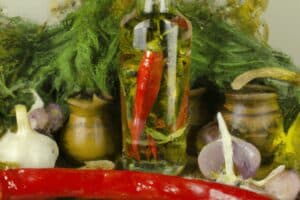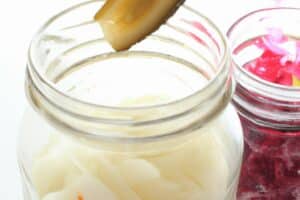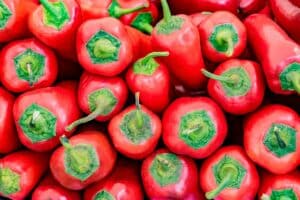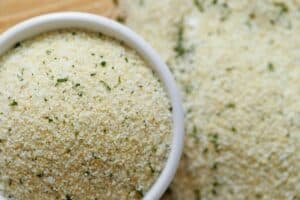Many garam masala substitute include common pantry staples like curry powder, cumin and allspice.
You can use whatever suits you best, whether it be something you have on hand or something you’re more likely to cook with in the future.
What is Garam Masala Made Of?
Garam masala is a South Asian spice mix that’s frequently found in dishes from India, Bangladesh, and Pakistan. It’s complex, warming, and aromatic, with earthy undertones.
Usually, it contains toasted coriander, cumin, cassia or cinnamon, and cardamom. However, garam masala vary greatly by region, and many families have their own unique blends.
While you can purchase garam masala in some grocery stores, it’s not always easy to find. And, if you’re not cooking a cuisine that relies on garam masala regularly, it might not be worth buying.
The second you open the bottle, the spices within begin to degrade. So, unless you’ll use your garam masala within a couple of months, buying a bottle might not be a waste.
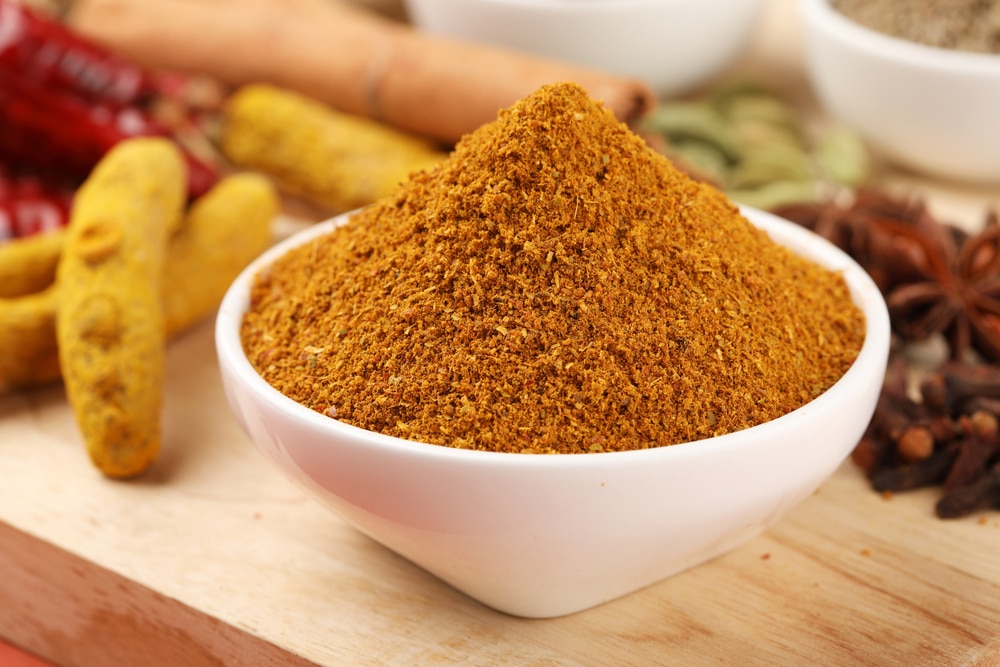
Top 5 Garam Masala Replacements
1. Curry Powder
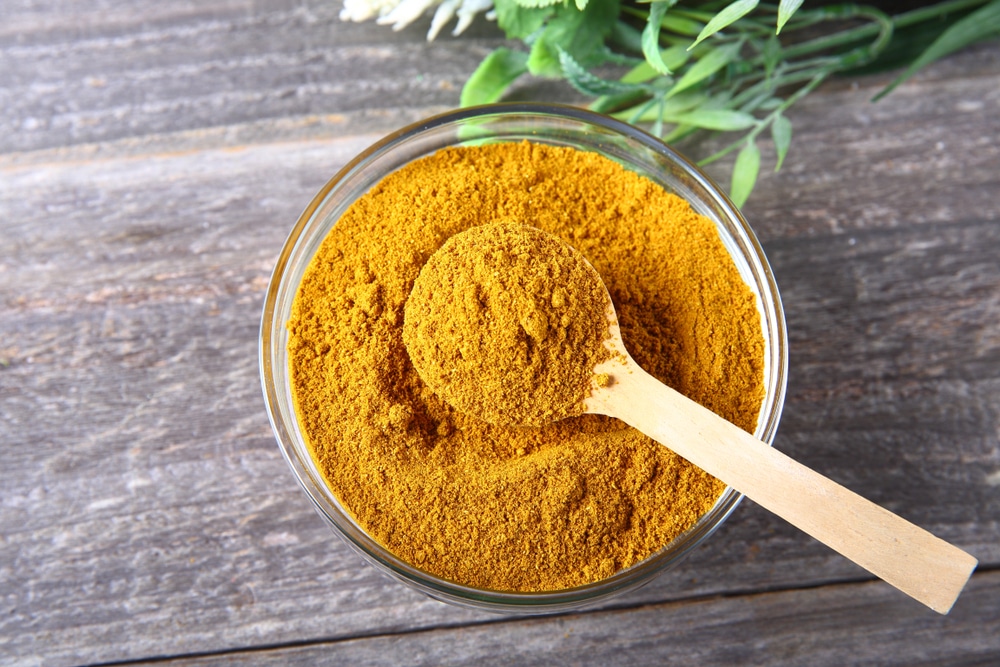
The easiest sub for garam masala powder is curry powder, which makes sense given what curry powder is. Curry powder is a European invention developed by enterprising merchants at the height of British colonialism.
At the time, wealthy housewives in the American colonies and Great Britain hired Indian cooks to cater their parties and soirees. That meant chutneys, curries, and warming lentil soups came into vogue on both sides of the Atlantic.
Housewives who couldn’t afford to hire Indian cooks still hoped to create the popular foods. Unfortunately, they lacked knowledge of Indian spices.
They struggled to replicate Indian spice blends and found experimentation to be expensive. Buying the many spices that garam masala or other Indian spice mixes include was a pricey endeavor, and the results weren’t always good.
Spice merchants realized they could make more money by selling a generic Indian spice blend for the everyday housewife. They called it curry powder, and it was an instant hit. Housewives loved that they could use one seemingly simple ingredient to replicate complex Indian dishes.
You can still find curry powder on most supermarket shelves, and it’s still relatively affordable.
Curry powder usually contains black pepper, cloves, cardamom, nutmeg, and turmeric. Except for turmeric, all of those spices are also in most garam masala blends.
So, curry powder works well as a direct substitution for garam masala in most recipes.
Turmeric is bright yellow-orange, though. That means, if you use curry powder in place of garam masala, your dish will look cosmetically different. However, the flavor will be similar.
With curry powder, you’ll lose some complexity, but it’s certainly the easiest way to substitute garam masala in a recipe.
2. Cumin and Allspice
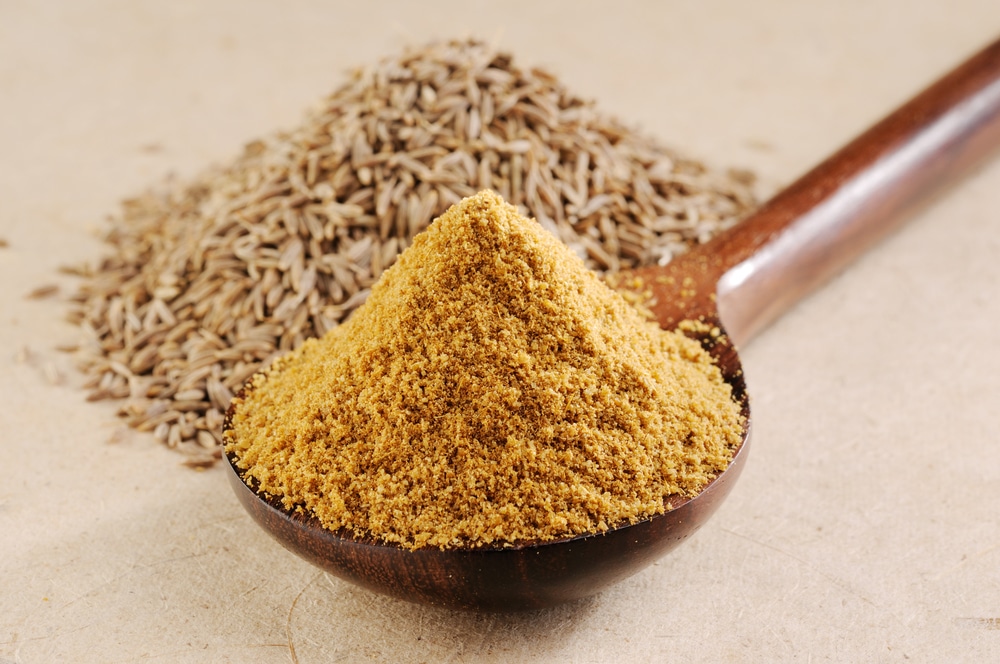
You can create another easy substitution for garam masala using cumin and allspice. Cumin is a dried seed that comes from the same family as parsley. It’s a common ingredient in Middle Eastern, Latin American, and Indian cooking.
Cumin is warm and earthy with just a hint of sweetness. It mimics the warmth you’d find from many spices in garam masala.
Allspice is a dried berry from a plant in the myrtle family. It’s common in many cuisines, including Middle Eastern, Caribbean, and American dishes. Allspice brings flavors of clove, cinnamon, and nutmeg, which also mimic the warmth in garam masala.
Cumin and allspice are common ingredients in the United States. Cumin is common in many southwestern U.S. recipes, and allspice is essential in much of American baking.
You probably have both on hand if you have a fully stocked spice cabinet. If not, they’re easy to get at most grocery stores.
Using cumin and allspice in place of garam masala is convenient. And, they’ll keep you from purchasing a new spice that you might only use once. Chances are you’ll go through cumin and allspice relatively quickly, especially if you cook a lot of typical American cuisine.
To substitute cumin and allspice for garam masala, you’ll want to make an equivalent mix of one part cumin to ¼ part allspice.
For example, if a recipe calls for a quarter cup of garam masala, you would use one tablespoon of allspice and three tablespoons of cumin.
You won’t get the same complexity that garam masala provides, but you’ll come closer than you would with straight curry powder.
3. Coriander, Cumin, and Common Warming Spices
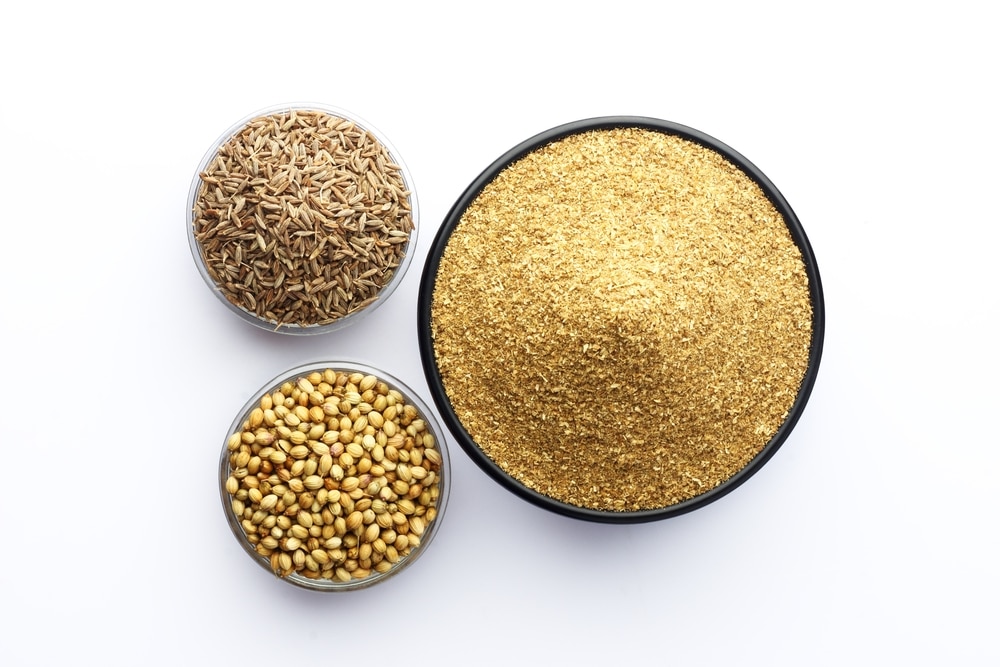
With a little more time and a few more spices, you can cobble together your own version of garam masala.
Granted, this version won’t have some of the more authentic but difficult-to-find ingredients, like mace or cassia. But, you can get very close to authentic garam masala with easy-to-find spices.
Coriander, cumin, and black peppercorns form the base of most garam masala recipes. Luckily, all three of those spices are available in almost every grocery store. They’re also versatile ingredients that most home cooks keep stocked.
Cardamom, cloves, cinnamon (sticks or ground), and nutmeg make up the rest of this almost-garam-masala-mix. Cinnamon is in the same family as cassia and will add a similar spiciness and warmth. Nutmeg and mace are both inherent to the nutmeg fruit. However, nutmeg is easier to find in the U.S. than its mace counterpart.
To create a garam masala substitute using easy-to-find spices use:
1 part coriander
1/2 part cumin & black peppercorns
1/4 part ground cardamom, cinnamon, cloves, and nutmeg
Ideally, you’ll use toasted spices or toast them yourself before mixing. Toasting spices is very easy, but you’ll need to start with whole, rather than ground, spices.
Toast them in a dry pan over medium heat, frequently stirring, until they release their rich scent. Then, you can grind them together using a spice grinder.
You can adjust the ratio of spices to suit your exact taste better. And, if you plan to cook a lot with garam masala, you can make this mixture in a big batch. Then, use it as a 1:1 garam masala substitution.
4. Chaat Masala
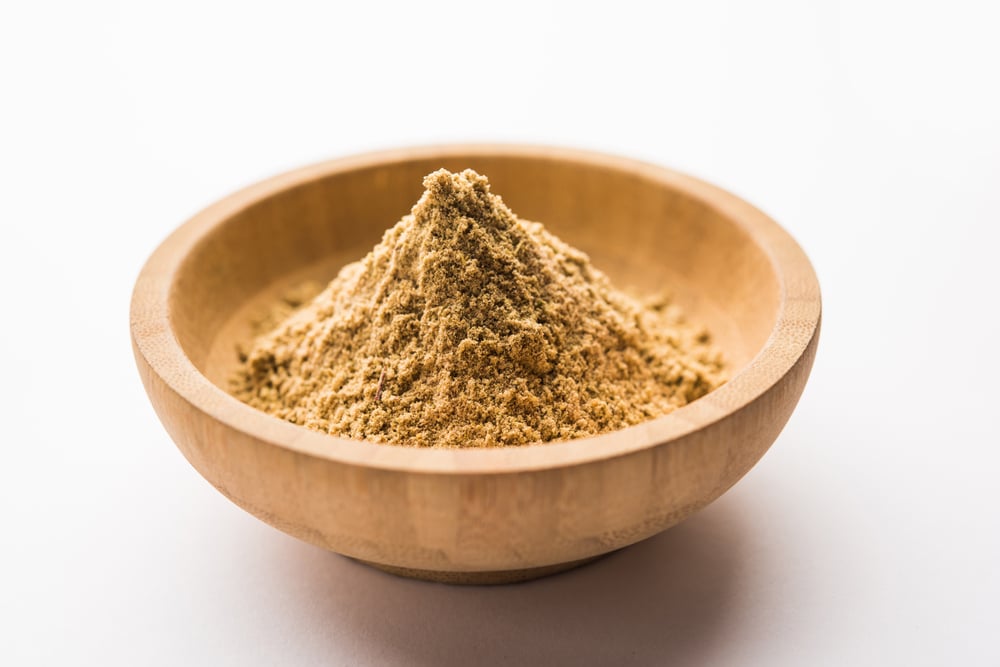
Chaat masala is another popular Indian spice mix that you can use in place of garam masala in any recipe. Chaat masala provides the same warming heat as garam masala but also has a little sourness and more umami flavors.
Chaat masala includes black salt, which isn’t really black at all. It’s actually a pink-brown salt that’s native to the Himalayas.
The black salt in chaat masala adds umami flavors that garam masala doesn’t have. Fennel and green mango powder add complex sourness that garam masala also doesn’t contain.
For these reasons, you might want to ensure you enjoy chaat masala before you use it as a substitute. Assuming you like chaat masala, start by using half of what is called for in the recipe. Then, taste and add more if desired.
The benefit of using chaat masala instead of garam masala is that you can use it in a variety of other Indian dishes. Chaat masala is a vital ingredient to keep in your pantry if you like Indian dals or chaats or enjoy making Indian drinks.
5. Ras el Hanout
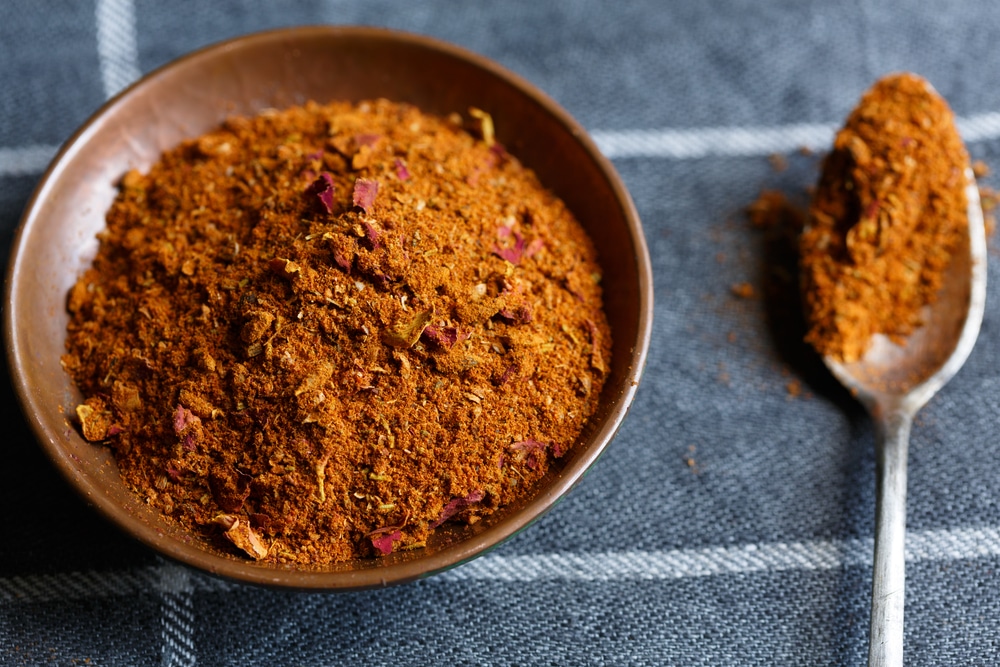
Ras el hanout is a North African spice mix that adds warmth and heat to any dish, much like garam masala. Its main components include cardamom, cinnamon, cloves, cumin, nutmeg, and coriander. In case you didn’t notice, that’s a very similar list to what’s in most garam masalas.
Ras el hanout is common in traditional North African cooking, and if you enjoy making tagines or couscous dishes, it might be a good spice to keep on hand. It’s also fantastic on roasted chickpeas and in lentil stews.
Unfortunately, ras el hanout isn’t always easy to find. Like garam masala, you might have to order it online. Alternatively, you might find it labeled “Moroccan Spice” in some grocery stores. Or, you can look for it in specialty spice markets.
When substituting ras el hanout for garam masala, keep in mind that ras el hanout is hotter. It’s a bit like garam masala mixed with a pinch of cayenne.
Instead of direct substitution, you’re probably better off starting with a small amount of Ras el Hanout and building up slowly.
Final Thoughts
You can use something as simple as curry powder to mimic the warmth of garam masala. Or, you can spend some time creating your own unique garam masala blend with plenty of coriander, cumin, and other warming spices you have on hand.
Alternatively, you can seek out something like ras el hanout. It’s not as easy to find in stores, but it is a delightful blend that you might want to have if you enjoy cooking North African dishes.


